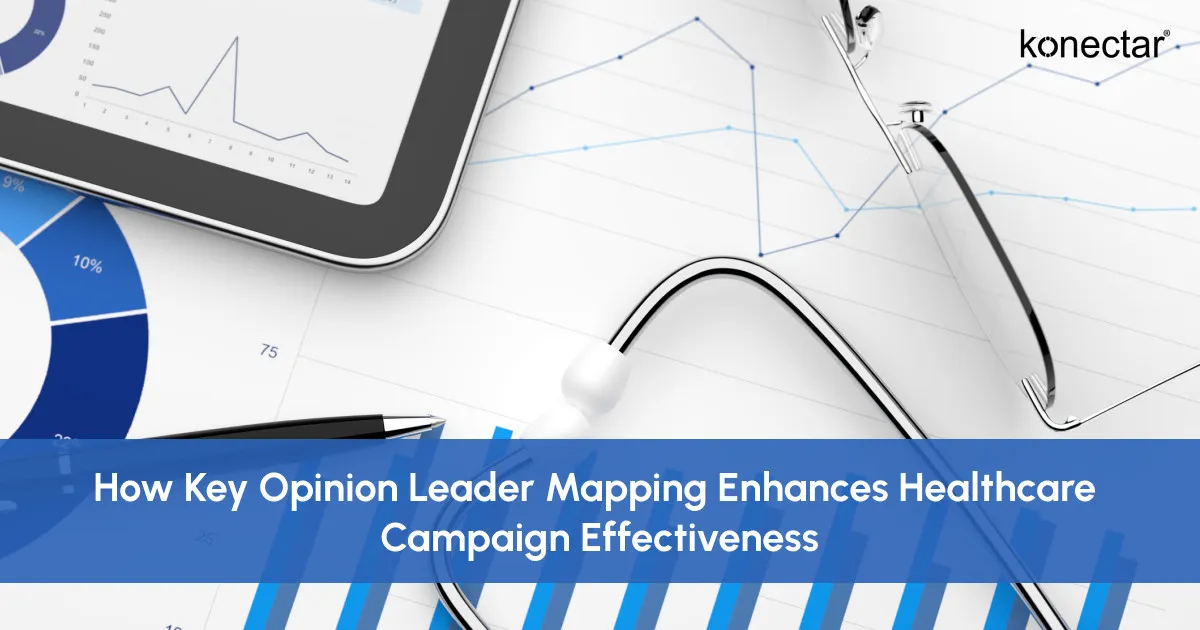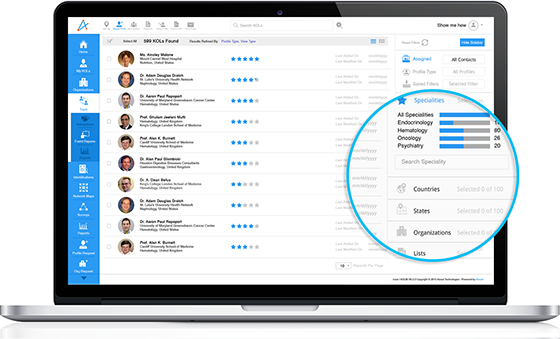19-03-2025
How Key Opinion Leader Mapping Enhances Healthcare Campaign Effectiveness

Key opinion leader mapping is a crucial step in a KOL engagement strategy. It's a systematic approach that helps life sciences teams identify prominent healthcare professionals who can serve as key pillars for a brand, validate therapies, influence peers, and enhance patient care.
Beyond just identifying these experts, KOL mapping provides insights into their networks, communication channels, and areas of influence. This enables organizations to develop HCP engagement strategies that are not only targeted but also effective. How this actually translates into real-world success, we will explore in the sections ahead.
In this article:
1. How KOL Mapping Drives Campaign Success
2. Best Practices for Effective KOL Mapping
3. Use of AI and Data Analytics in KOL Mapping
4. The Takeaway
5. FAQs
KOL mapping is also essential when life sciences companies, whether pharmaceutical, medical device, veterinary, or health tech, are planning healthcare campaigns across social media or offline channels. The process helps identify the right KOLs, understand their influence, monitor their activity on social media, track their followers, and assess their collaborations and engagement frequency.
With these insights, teams can design powerful, targeted strategies that amplify campaign impact, build trust with audiences, and drive meaningful outcomes.
How KOL Mapping Drives Campaign Success
Consider a small medical device company preparing to launch a new product. By leveraging KOL mapping, the team can identify Digital Opinion Leaders (DOLs), KOLs who are highly active and influential on social media. These DOLs have established trust with their peers, clinics, caregivers, and patient communities.
Through sharing educational content, clinical insights, and thought leadership, DOLs can spark conversations, build awareness, and highlight the product's value within the healthcare ecosystem. As their content is amplified across networks, the campaign gains traction, ensuring the right audiences are informed, engaged, and prepared to take notice.
As an extension of this digital momentum, offline campaigns can further strengthen awareness. KOLs who are influential at medical conferences, local workshops, and advisory boards can carry forward the same messaging in person. Their participation in panel discussions, training sessions, and peer-to-peer exchanges reinforces brand credibility and influences real-world adoption. This offline synergy ensures that awareness translates into meaningful engagement across the healthcare community.
Best Practices for Effective KOL Mapping
Define Clear Objectives
Begin by clearly articulating the goals for engaging with KOLs in healthcare campaigns, such as influencing treatment adoption or expanding brand awareness. Well-defined objectives will guide all mapping and engagement efforts.
Identify Selection Criteria
Select KOLs based on relevant expertise, credibility in their field, alignment with campaign values, and their capacity to influence peers. Consider measurable criteria, such as publications, affiliations, speaking engagements, and social media reach.
Analyze Multi-Source Data
Leverage diverse data sources: clinical claims, academic publications, clinical trials, grants, conference contributions, and social platforms. Multi-dimensional analysis helps reveal both established and emerging influencers.
Segment and Categorize KOLs
Group KOLs according to their specialty and relevance to specific objectives. Segmentation helps tailor engagement and maximizes campaign ROI.
Personalize Engagement Strategies
Adapt outreach, communication, and partnership opportunities to each KOL's preferences, expertise, and professional interests.
Continuously Monitor and Adapt
Track and measure the performance of healthcare campaigns, adjust strategies as needed, and be prepared to iterate based on outcomes, feedback, and changing market conditions.
Maintain Ethics and Transparency
Operate within regulatory guidelines, ensure transparency in engagement, and disclose any potential conflicts to uphold integrity and trust.
Use of AI and Data Analytics in KOL Mapping
Instead of manually gathering and analyzing vast amounts of data, healthcare organizations can now leverage AI-powered tools to streamline KOL mapping. Platforms like konectar, an AI-driven HCP management solution, automate the identification and assessment of key opinion leaders, offering real-time insights into their behaviors, preferences, and professional networks.
By implementing konectar, teams can achieve a more accurate, data-driven understanding of KOL influence, enabling targeted and efficient engagement strategies that maximize the impact of healthcare campaigns. For more information, request a demo of konectar.
The Takeaway
Effective KOL mapping can make all the difference between a good outcome and a great one in healthcare campaigns. By accurately identifying and engaging the right experts, healthcare organizations can boost brand credibility and deliver compelling messages that resonate deeply with their target audience.
Harnessing AI-driven KOL mapping brings unparalleled precision to healthcare marketing. With data-driven insights, advanced segmentation, and targeted messaging, organizations can move beyond traditional outreach to build impactful, lasting connections.
FAQs
- What is KOL Mapping?
KOL Mapping is a systematic process that identifies influential healthcare experts who can help amplify the impact of a healthcare campaign.
- Why is KOL Mapping important in healthcare campaigns?
KOL mapping identifies influential healthcare professionals who can guide campaigns through targeted engagement and maximize impact.
- How does AI enhance KOL Mapping?
AI analyzes vast datasets to identify influential healthcare professionals, uncovering hidden connections to develop more precise, data-driven KOL strategies.





